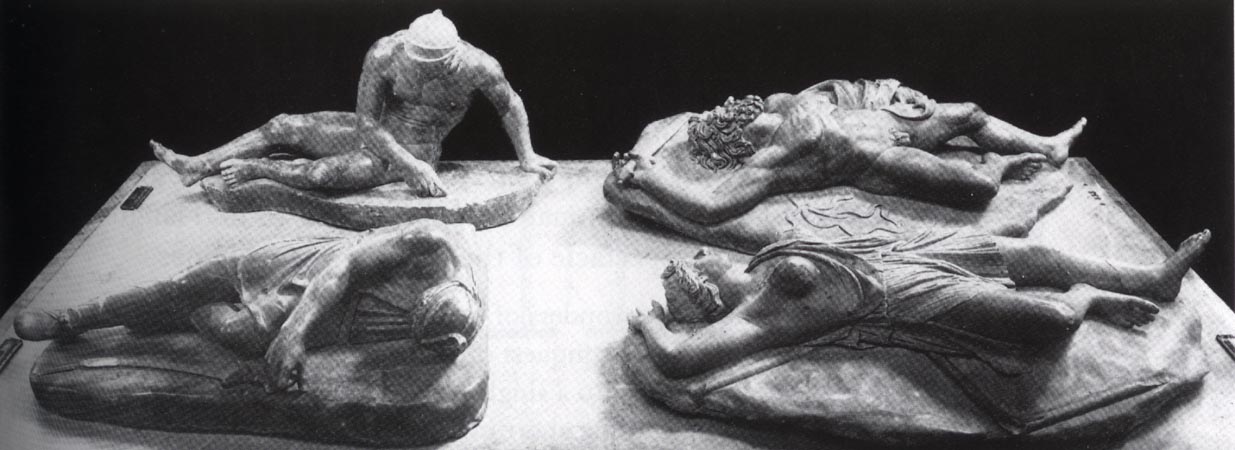Professor Kahl goes to considerable length in explicating the details of the Great Alter, with this objective (p. 86): "our focus here is on the question of visual impact . . . a coherent semantic system of meaning making this . . . readable even for the illiterate . . . and those who come (and still come) to visit the alter."
Calling attention to the different perspectives offered the viewer (high/up and in versus low/down and out), Kahl suggests that the visitor today would likely share the impression made on the "majority" of contemporary visitors, described (p. 90) a second time by Kahl as "illiterate."
The visual impression we are invited to share, as we observe a conflict between the high and the low sculpted figures is to side with "the good cause."
A case in point is a portrayal in a frieze of the higher placed Athena, wrenching away the child of earth-mother Guia (pp. 92-95). But this is not the point Kahl wishes to make.
What is appended to this straightforward description of the frieze is the equating of sculptures of giants with Galatian enemies "at various stages of Pergamon history."
Following this identification of Galatian enemies in the frieze, Kahl asks (p. 95), "How is this stunning metamorphosis of Galatians into giants to be explained?"
By associating the Galatians in general, with the mythological giants, Kahl appears to me to be making a leap well beyond what is suggested either by Pergamon history or by the representations found on the sides of the Great Alter.
Galatians fought on all sides (apparently as mercenaries) in the wars between Roman and Greek armies against the Seleucid rules in Greece and Anatolia. This suggests to me that there is no apparent reason for the Greek builders of the Great Alter to have wanted to require a visual association to be made between mythological giants and Galatian tribesmen.
The Galatians in defeat, are represented by the Dying Gaul, as Kahl has observed (see my previous two posts).
But the Galatians are not obviously represented as giants in the mythology of warfare against giants, as they were represented already by the Dying Gaul.
Professor Kahl thinks the Galatians were associated with the defeated mythological giants and, as evidence, cites the traveler and sight-seeing Pausanias, when, in the 2nd century C.E., he observed a victory monument set up on the Acropolis in Athens by Atalos I.
Here is what Pausanias seems to have seen:

Here is what Pausanias wrote (I.25.2) about what he saw: "By the south wall [of the Athenian Acropolis], Attalos dedicated a) the legendary battle of the Giants [top right]..., b) the battle of the Athenians against the Amazons [bottom right], c) the battle against the Persians at Marathon [bottom left]; d) the destruction of the Gauls in Mysian --each figure being about two cubits [=3']."
(For the above image and quotation, see: http://employees.oneonta.edu/farberas/ARTH/ARTH209/Hellenistic.html
A further descriptive leap is made when Kahl refers to the opponents of Greek and then Roman forces as "lawless" (p. 96), whether mythological or actual.
Kahl finds lawlessness to be "a crucial layer of meaning" both as to the Alter at Pergamon and "also of the fight between Paul and his opponents in the letter to the Galatians."
The reference to Paul's letter to the Galatians prompts this reader to feel that Professor Kahl is straining to redefine what can reasonably be concluded from ancient visual representations. Such is the desire to associate these images with the venerable Apostle.
Isn't that what the title of this book suggests?

No comments:
Post a Comment